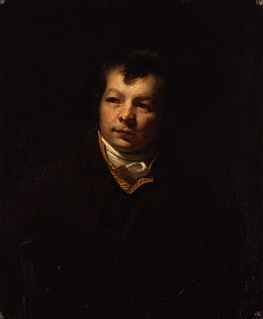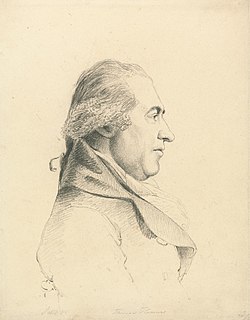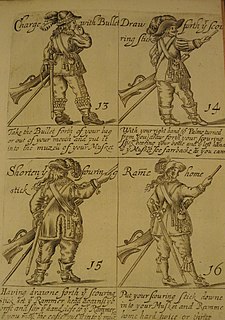
William Hole (or Holle) was a skilled English engraver who died in 1624 though the date of his birth is uncertain. Hole's work suggests French influence.

William Hole (or Holle) was a skilled English engraver who died in 1624 though the date of his birth is uncertain. Hole's work suggests French influence.
His first dated plates belong to 1607, among them the title page for a London edition of the Breeches Bible.
For many books, Hole engraved a portrait of the author, such as John Florio's 1611 Italian and English dictionary, George Chapman's 1616 translation of the Iliad , and George Wither's 1617 book of poems. [1] Hole also made maps and travelogue material.
For the publication Parthenia, or The Maydenhead of the First Musicke that ever was Printed for the Virginalls (c.1612), he engraved keyboard music by three English composers, Dr John Bull, William Byrd and Orlando Gibbons. This was the first time that intaglio copperplate engraving was used for English music scores, [2] although engraved music had been printed on the continent from the late 16th century. This development was particularly important for keyboard music, as movable type was not really suitable for printing keyboard music in standard musical notation.
Some of Hole's work is in the British Museum.

George Vertue was an English engraver and antiquary, whose notebooks on British art of the first half of the 18th century are a valuable source for the period.

Francesco Bartolozzi was an Italian engraver, whose most productive period was spent in London. He is noted for popularizing the "crayon" method of engraving.

William Faithorne, often "the Elder", was an English painter and engraver.

William Wynne Ryland was an English engraver, who pioneered stipple engraving and was executed for forgery.

Martin Droeshout was an English engraver of Flemish descent, who is best known as illustrator of the title portrait for William Shakespeare's collected works, the First Folio of 1623, edited by John Heminges and Henry Condell, fellow actors of the Bard. Nevertheless, Droeshout produced other more ambitious designs in his career.

Parthenia or the Maydenhead of the first musicke that ever was printed for the Virginalls was, as the title states, the first printed collection of music for keyboard in England. 'Virginals' was a generic word at the time that covered all plucked keyboard instruments – the harpsichord, muselaar and virginals, but most of the pieces are also suited for the clavichord and chamber organ. Though the date is uncertain, it was probably published around 1612. The 21 pieces included are ascribed to William Byrd, John Bull, and Orlando Gibbons, in three sections.
Johan Faber, anglicized as John Faber, commonly referred to as John Faber the Elder, was a Dutch miniaturist and portrait engraver active in London, where he set up a shop for producing and marketing his own work. His son John Faber the Younger was also active in this field.

George Clint was an English portrait painter and engraver, especially notable for his many theatrical subjects.

Thomas Hearne was an English landscape painter, engraver and illustrator. Hearne's watercolours were typified by applying a wash of subtle subdued colours over a clear outline in fine brush, pen or pencil. His techniques were studied by younger artists such as Thomas Girtin and J. M. W. Turner.

William Rogers was an English engraver. A Citizen of the City of London – one of his surviving engravings is signed Anglus et Civis Lond(oniensis). – he is the first English craftsman known to have practised engraving and the greatest portrait engraver of the Tudor period. The English were extremely late in coming to printmaking, though several artists from the thriving Flemish industry had worked in England already; the engraved print had been invented over 150 years before Rogers began to produce them. Rogers was also a goldsmith, and presumably acquired his technique in that context. His portrait style reflects Flemish models, while his backgrounds are often "overloaded with ornament" that is "redolent of the goldsmith's shop".

John Smith was an English mezzotint engraver and print seller. Closely associated with the portrait painter Godfrey Kneller, Smith was one of leading exponents of the mezzotint medium during the late 17th and early 18th centuries, and was regarded among first English-born artists to receive international recognition, along the younger painter William Hogarth.
John Payne (1607–1647) was an English engraver, who was one of the earliest exponents of the art of engraving in England. His best work was the finest produced by a native-born engraver working during the reign of Charles I.
William Home Lizars was a Scottish painter and engraver.

Richard Gaywood was an English engraver.
Charles Parsons Knight (1743–1827?) was an English engraver.

Robert Graves (1798–1873) was a British engraver.

Sir Robert Strange was a Scottish engraver. A Jacobite, he spent periods out of Great Britain, but was eventually reconciled to the Hanoverian succession and was knighted by George III.

Thomas Jenner was an English author, engraver, and publisher in London. He kept from 1624 a print-shop by the south entrance of the Royal Exchange; it was recommended by John Evelyn to Samuel Pepys.
Edward Le Davis was a Welsh engraver and art dealer. Born Edward Davis, he spent some time working in France, and later prefixed "Le" to his surname.

Elisha Kirkall (c.1682–1742) was a prolific English engraver, who made many experiments in printmaking techniques. He was noted for engravings on type metal that could be set up with letterpress for book illustrations, and was also known as a mezzotint artist.
| Wikimedia Commons has media related to William Hole (engraver) . |